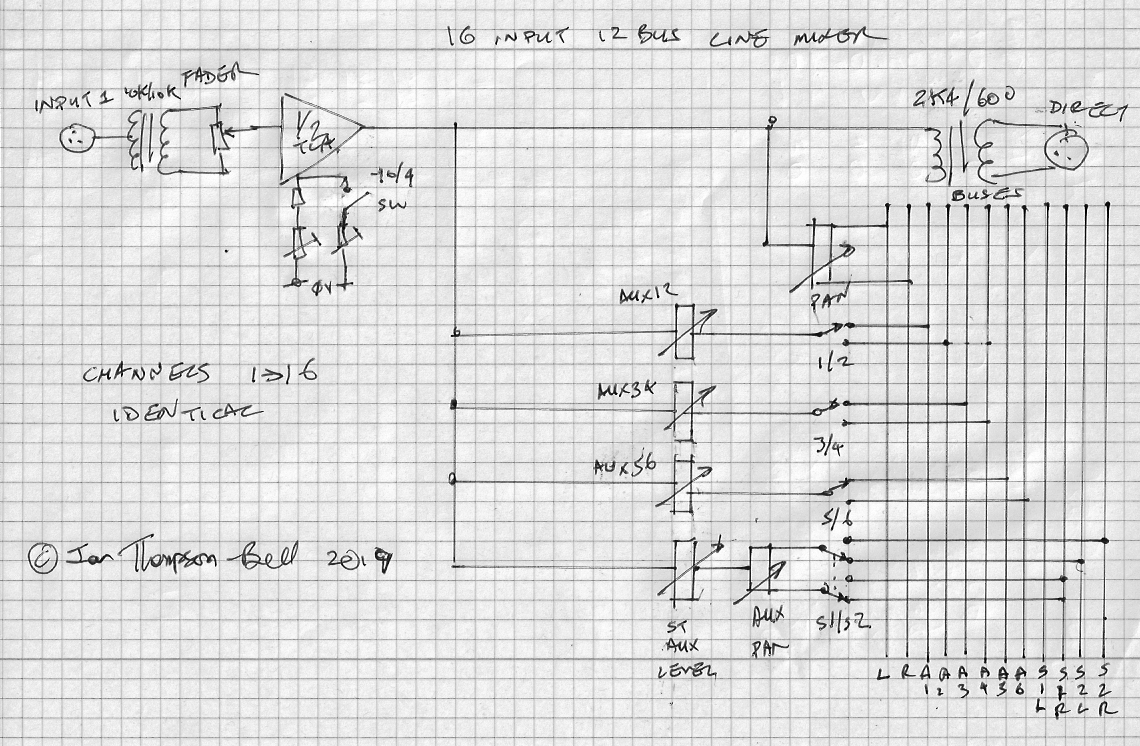I'm thinking about bulding a line mixer based on the EzTube mixer design, although with a very different configuration.
I would need 16 mono channels with the follow features:
- Balanced line input (with +4 dbu/-10 dBV switch)
- Direct out (post fader)
- 6 mono and 2 stereo aux sends (post fader)
- Pan
- Level (with 100 mm fader and bypass switch for easy unity gain summing)
The master section would be very basic:
- Aux levels (6 mono/2 stereo)
- Stereo mix level
- Balanced outputs for all 12 mix busses
Obviously, I will not be able to use the (otherwise very clever) EzTube module design for this project. Adapting the Eztube circuits and designing PCBs should not be a problem but I'm slightly concerned about the metal work, which can be very time consuming (and expensive) in my experience.
Does this project make sense? Are there other DIY projects I should take a look at before I dive in? Any good ideas for the metal work?
Thanks,
Rasmus
I would need 16 mono channels with the follow features:
- Balanced line input (with +4 dbu/-10 dBV switch)
- Direct out (post fader)
- 6 mono and 2 stereo aux sends (post fader)
- Pan
- Level (with 100 mm fader and bypass switch for easy unity gain summing)
The master section would be very basic:
- Aux levels (6 mono/2 stereo)
- Stereo mix level
- Balanced outputs for all 12 mix busses
Obviously, I will not be able to use the (otherwise very clever) EzTube module design for this project. Adapting the Eztube circuits and designing PCBs should not be a problem but I'm slightly concerned about the metal work, which can be very time consuming (and expensive) in my experience.
Does this project make sense? Are there other DIY projects I should take a look at before I dive in? Any good ideas for the metal work?
Thanks,
Rasmus





























![Electronics Soldering Iron Kit, [Upgraded] Soldering Iron 110V 90W LCD Digital Portable Soldering Kit 180-480℃(356-896℉), Welding Tool with ON/OFF Switch, Auto-sleep, Thermostatic Design](https://m.media-amazon.com/images/I/41gRDnlyfJS._SL500_.jpg)



